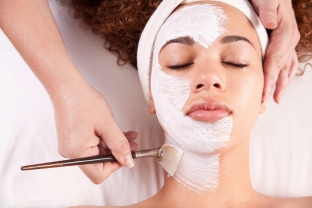Proper skin cleansing – this is an important part of her care, necessary for a healthy, radiant and youthful appearance. Aestheticians currently have in their arsenal a large number of means and methods of skin cleansing, which are selected depending on the needs and individual characteristics of the patient. One of the most popular cosmetic procedures for cleansing the skin are chemical peels, which effectively remove dead skin cells of the epidermis. However, the question of the possibility of conducting chemical peels in the summer is very acute. Estet-portal.com invites specialists to figure out which peels can and cannot be done in the summer.
Summer peeling: what can and cannot be done
Summer peeling – this is always a rather big risk, since the dead skin flakes that are removed with the help of peeling, first of all, perform its protective function.
When the active ingredients of chemical peeling exfoliate the stratum corneum, young, undoubtedly healthy and beautiful, but very vulnerable skin opens underneath, and in the summer we are constantly accompanied by aggressive exposure to ultraviolet rays.
Therefore, the choice of peeling in the summer should be approached very carefully, based on knowledge about the depth and intensity of the impact of certain components for various chemical peels.
Summer peeling:
- what peeling should not be done in summer;
- what kind of peeling can be done in summer.
What peeling should not be done in summer
As you know, peeling is a procedure for cleansing the skin by exfoliating the old cells of its stratum corneum. Any exfoliating agent breaks the natural protective barrier of the skin, and after the procedure, it becomes especially sensitive to the effects of various environmental factors, and especially to the influence of ultraviolet rays, so many peels in the summer should not be performed on patients. First of all, the forbidden summer procedures include medium and deep peels, for example, phenol peeling, Jessner peeling and others. When carrying out such peelings in the summer, at best, the skin will react with redness and irritation, at worst – the patient will receive persistent hyperpigmentation, with which the cosmetologist will have to wage a very long and serious struggle. In addition, acids such as glycolic, pyruvic and salicylic provoke photosensitivity – skin sensitivity to the sun, so in the summer it is strictly forbidden to carry out even superficial peels with these acids.

What kind of peeling can be done in summer
The best choice of peeling in summer – This is a light, superficial chemical peel with the right set of active ingredients. Not all acids provoke photosensitivity, moreover, some of them are even able to protect the skin from ultraviolet rays. These acids include:
- dairy;
- phytic;
- almond;
- apple;
- wine;
- ferulic;
- lemon.
For peeling in summer, it is necessary to choose small concentrations of these acids – 5-15% and be sure to use a neutralizer.
Enzyme peels can also be performed in the summer, as the enzymes gently dissolve the dead scales of the stratum corneum and do not provoke skin sensitivity to sunlight.
Optimal choice of peeling in summer – it is a mild, low-concentration chemical peel with the right acids that cleans the skin well without harming it.
It is important to inform the patient that after the peeling, he must use a sunscreen with an SPF of at least 30. Proper selection of a procedure for cleansing the skin and competent care for it after – this is what you need for effective and absolutely safe exfoliation in the summer.







Add a comment